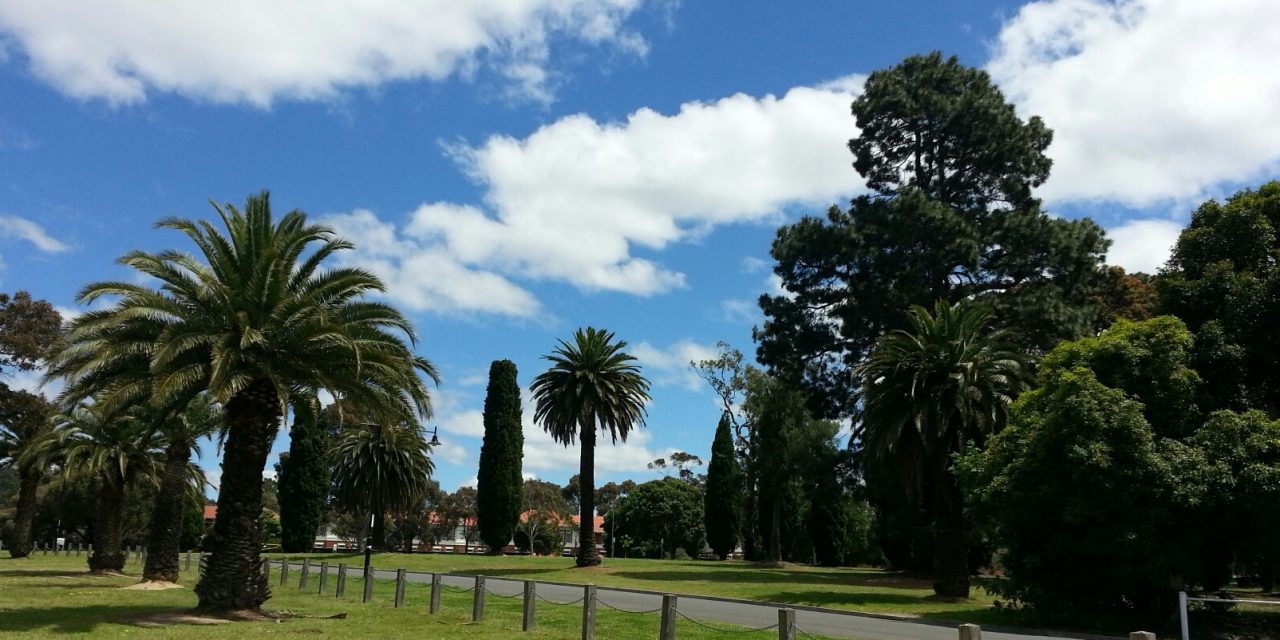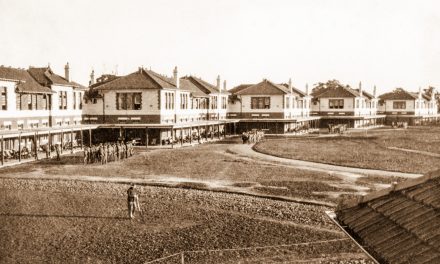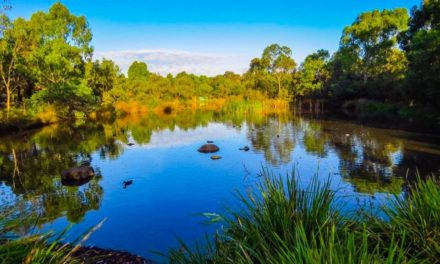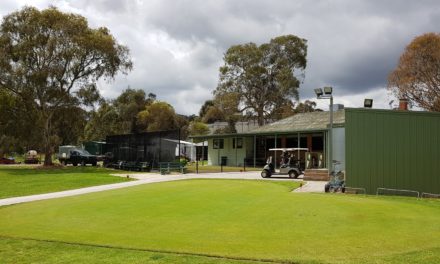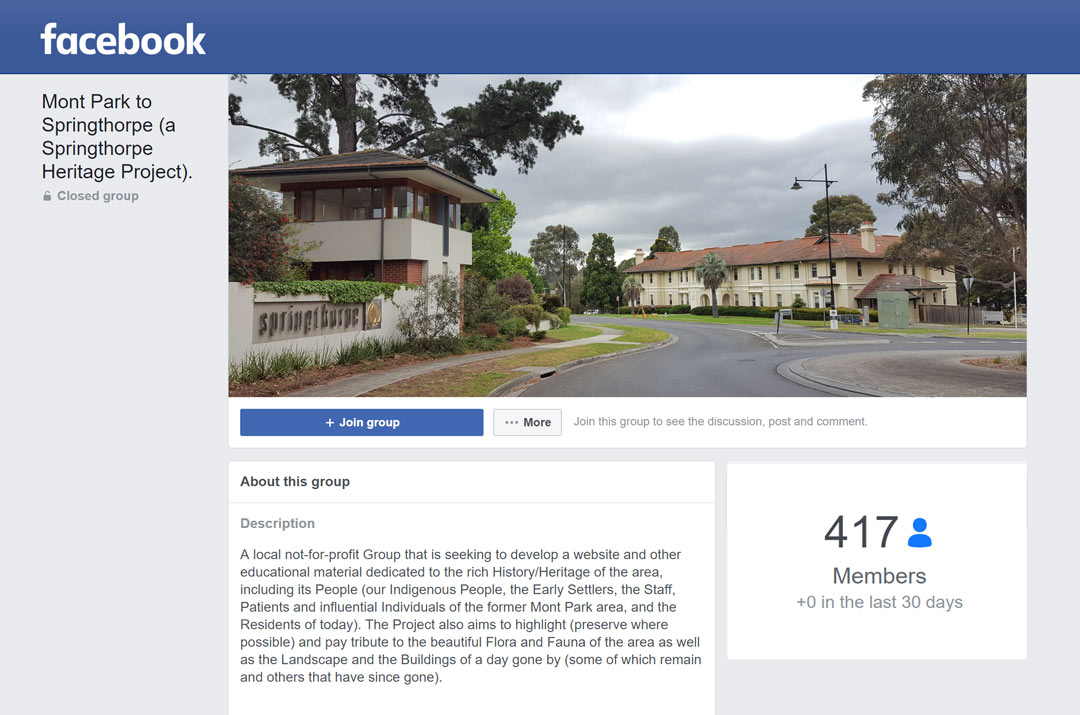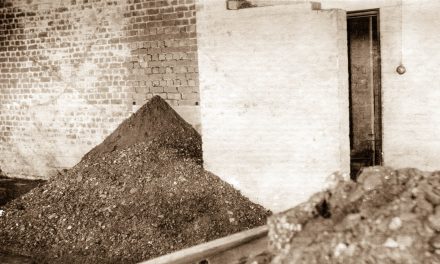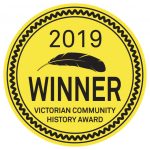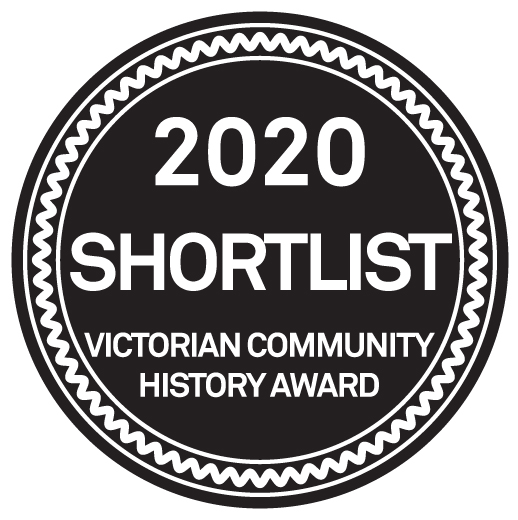For twenty five years he worked there and also around Melbourne, on State government projects in the inner city, and out as far as the Maroondah Reservoir. Old photographs and newspaper records show that he had a great passion for his occupation, and was practical and decisive.
https://trove.nla.gov.au/newspaper/article/243419095?searchTerm=linaker
He advised on government projects, lectured to public groups and was a prominent member of the Victorian Tree Planters Association (Paul Fox, 1985 and Julie Mulhauser, 2009). Melbourne city had been designed from its earliest days to feature large parklands around the business district. The need for horticulture expertise was gradually being recognised in the 1920s and 1930s, but decisions about public plantings at the Botanic Gardens and King’s Domain were not without controversy and rivalry. https://trove.nla.gov.au/newspaper/article/243309845?searchTerm=linaker
Linaker had no such rivals in the Asylum landscaping business. Here he worked companionably and successfully with the patients, who were utilized as part of their recuperative therapy.
Ararat
Hugh had started his work as a gardener in Ballarat and then moved to Ararat for this first work with the Victorian Lunacy Department (1901 – 1911). The Alexandra Gardens in Ararat have a pond and a plaque to commemorate him and his work. The garden design incorporates his signature trees – steeple shaped cypress, tall exotic palms and spreading deciduous trees. Here in Ararat he first supervised hospital patients in his gardening pursuits.

Palm at Ararat – photo courtesy Rebecca Le Get
Mont Park and Larundel
When Linaker moved to Melbourne to landscape the new Mont Park Asylum site in 1912, he lived with his family in what is now called ‘Linaker’s Cottage’, which is near Plenty Road. His wife Harriet assisted on the Curative Training committee of the Red Cross at Mont Park.
At Mont Park near the Farm Workers’ Block built in 1910, Linaker had large ornamental ponds excavated. The ponds were surrounded by wind mill palms which are shown on the cover of the book ‘Glimpses of the Past’. https://victoriancollections.net.au/items/53731cab2162ef06a0b6bbab Patients are seen wandering in this peaceful environment where the winds would have rustled through these exquisite palms. He also set up a plant nursery, orchards and vegetable gardens near here. This added to the Asylum farm produce, which was profitably utilized all over Victoria.
In the gardens near the Mont Park Chronic Wards, built in 1916, he created a beautiful landscape with rose bushes and shrubbery planted near the Wards and Nurses’ Home. Oaks, palms, conifers and deciduous trees were added amongst the ancient river red gums. Canary Island palms still feature in the gardens of the Springthorpe Estate homes along Ernest Jones Drive and oaks, cypresses and gums remain in the parklands. See https://www.montparktospringthorpe.com/if-only-the-river-red-gums-could-talk-by-gary-cotchin/
Gresswell Sanatorium
Old photographs of the Gresswell Sanatorium Hospital site from the 1930s to the 1990s show that it also once had lovely trees and landscaped gardens. These had been partially created by the patients, supervised by Hugh Linaker. This was part of their rehabilitation from tuberculosis (TB). Recovering patients were supervised in outdoor activities like digging, planting, tending fruit trees and vegetable gardens, feeding the noisy poultry, or concreting the rockeries.
Hugh Linaker presented a comprehensive and bold landscape design to the Mental Health Authority for Gresswell in 1929, before the first buildings were even commenced. He planned for garden beds next to the wards, with dozens of Himalayan cypress trees (Cupressus torulosa) forming a border around the area, and an interesting and varied mix of exotic trees and some 180 eucalypts. As was his usual practice by then, he planned for attractive palm trees to be introduced into the landscape, but photographs show ultimately only one palm tree, prominently featured in the Administration building front lawn. Various gums, from the pale, smooth trunks of sugar gums, to the dark textured trunks of flowering gums, were planted for their shade and their supposed healing fragrance. A photograph of the entrance to Gresswell Hospital in 1946 shows a vista of an attractive mix of pines, gums and deciduous trees.

Entrance to Gresswell Hospital 1946, with visitors and the Administration buildings in the distance – courtesy of DHHS Victorian Collection
The garden designs incorporated beds of low shrubs near some of the wards, with rock edging and embankments. Birds were apparently abundant in the Gresswell Hospital gardens as evidenced by a patient’s recollection in 1952 of the Medical Officer‘s dedicated photography of them (see Janet Brown, 1994, p. 219)
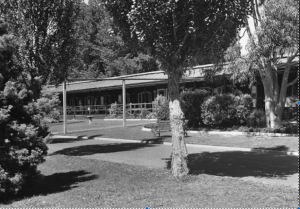
Gresswell Ward through the trees – photograph courtesy of PROV
Just as at Mont Park, Linaker chose to plant a variety of deciduous trees to vary the views from the wards as the seasons progressed – poplars, elms, ash and plane trees, although none of the resplendent oaks which flourished at Mont Park. The Gresswell gardens did not culminate in the full realisation of Linaker’s plans because the political and economic situation in Melbourne altered so much with the coming of the 1930s Depression and then World War II. Nothing is left of these gardens now on Gresswell Hill. https://walkingmaps.com.au/walk/4502

Gresswell Administration buildings and gardens, photograph courtesy of DHHS Victorian Collection
Maroondah Reservoir Park
At about the same time as he was thinking about the Gresswell Hospital surrounds, Linaker had been designing the Maroondah Reservoir parklands east of Melbourne in 1927 and 1928. Here he achieved a rich and varied forest-like environment, using magnificent trees of every shape, size, colour and texture. He chose eucalypts and conifers such as Himalayan pines and Monterey cypresses, cork oaks and even some massive redwood trees. https://prov.vic.gov.au/explore-collection/provenance-journal/provenance-2014/maroondah-reservoir-park This magnificent two hectares (five acres) remains a most appealing tourist and picnic destination.

Maroondah Reservoir wall and trees- photo courtesy Rebecca Le Get 2016
Burnham Beeches, Sherbrooke
Linaker had several other landscaping projects not related to his position with the Mental Health Authority. Along with Percy Trevaskis, he constructed the gardens of Alfred Nicholas’ property ‘Burnham Beeches’ in Sherbrooke. http://thenomadicexplorers.com/sites/default/files/users/65/files/australia-victoria-yarra-valley-dandenong-ranges-500/dandenong-ranges-stories-of-the-gardens.pdf
This was unique as it is one of the few home gardens Linaker helped to create, and it remains as a serene 23 hectare (50 acre) reserve. In the early 1930s he chose rockeries to line the terraced pathways which follow the contour of the land. Conifers of various shapes and colours, and low lying exotic shrubs blend in with majestic mountain ash trees which have stood here for generations. The house and gardens are particularly spectacular in the autumn with the native tree ferns unfurling amongst the other plants. http://www.trustadvocate.org.au/burnham-beeches-development-history/
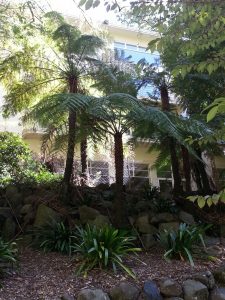
Tree ferns at Burnham Beeches April 2019 – photo from the author
Melbourne city
Linaker contributed to the Melbourne city King’s Domain and the Shrine of Remembrance horticultural design and construction in the 1930s. His work was not without controversy. The Premier of Victoria Stanley Argyle and Linaker had to defend the designs in public debates with rival landscape specialists. https://trove.nla.gov.au/newspaper/article/11689839?searchTerm=Linaker
Edna Walling was not always a fan of Hugh Linaker’s work. At this stage she was designing beautiful home gardens for Melbourne’s wealthier residents including Dame Nellie Melba and Sir Keith Murdoch. She was understandably critical of Linaker being chosen to design the Pioneer Women’s Memorial Garden in Melbourne. She was, after all, renowned for her water feature schemes and rockeries and probably felt rebuffed in being overlooked for the Women’s Memorial work. Linaker’s design featured a grotto and a sundial surrounded by a balanced variety of gardens of changing colours and heights. This work utilised underemployed men during the 1930s Depression. https://trove.nla.gov.au/newspaper/article/205076229
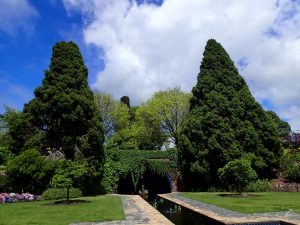
Greenery at Women’s Memorial Gardens – photo courtesy of Rebecca Le Get -2013
The decade before Linaker died was a most fruitful period for him and has provided us with a lasting legacy of some superb landscapes. Linaker believed in the health giving value of planted environments for the whole of the community, but had been particularly involved in his working life with producing serene and picturesque locations for those suffering mental and physical ill health and all of the workers who cared for them.
Prepared by Kathy Andrewartha (2020)
With thanks to Rebecca Le Get for resources, help and interest.
Resources
Paul Fox (1985) Over the Garden Fence, Historic Environment, 4, No. 3, pp.29 – 36. https://australia.icomos.org/wp-content/uploads/Over-The-Garden-Fence-vol-4-no-3.pdf
Julie Mulhauser (2009) Hugh Linaker, Landscape Gardener to the Lunacy Department. Australian Garden History 20, No. 4 pp. 12 – 20.
Janet M. Brown (1994) In the Company of Strangers: Former patients of Australian Tuberculosis Sanitoria share their experiences and insights, published by the author, Werribee. p.219
Rebecca Le Get (2018) An Environmental History of Tuberculosis Sanatorium Treatment within The River Red Gum Woodlands of Melbourne. Ph D. Thesis, La Trobe University, Melbourne.

